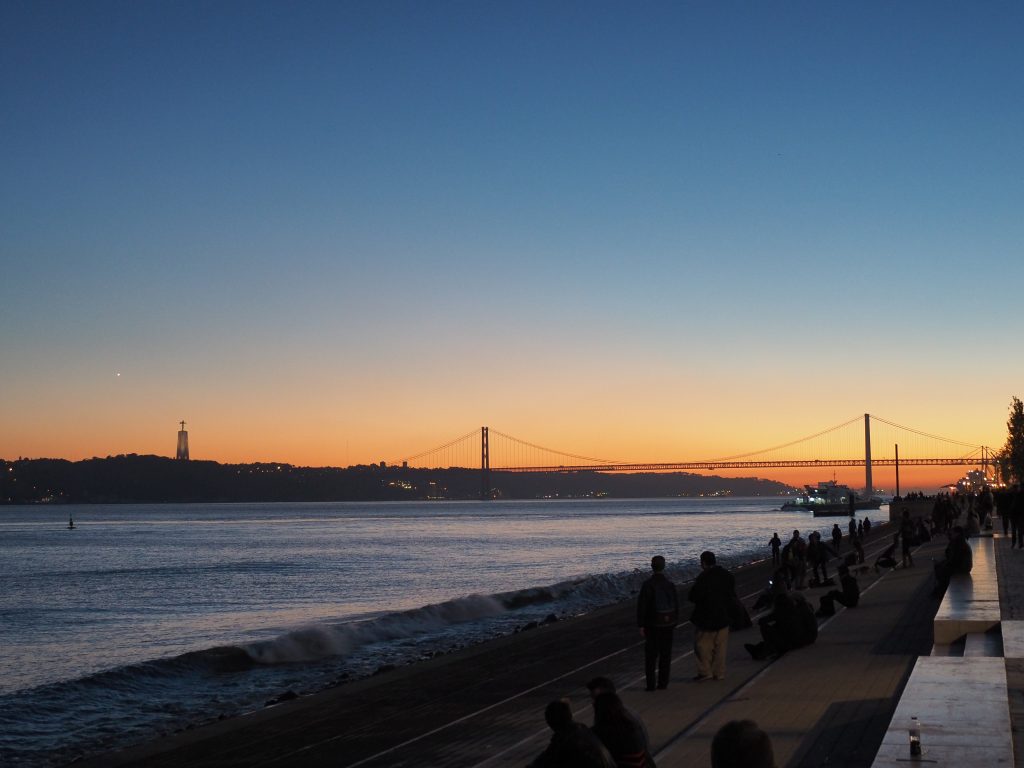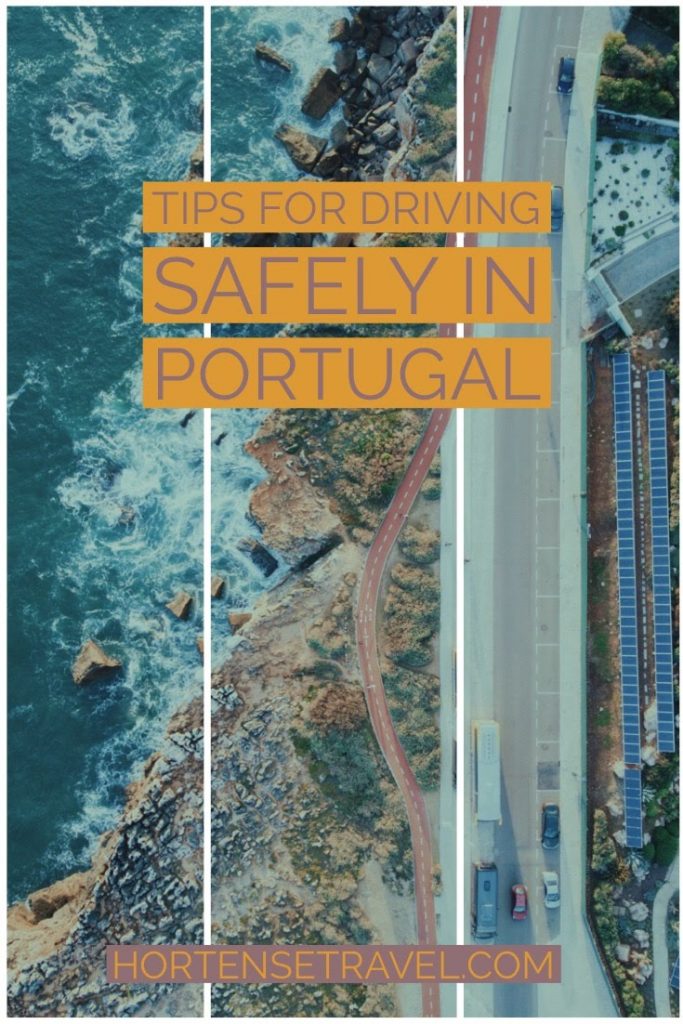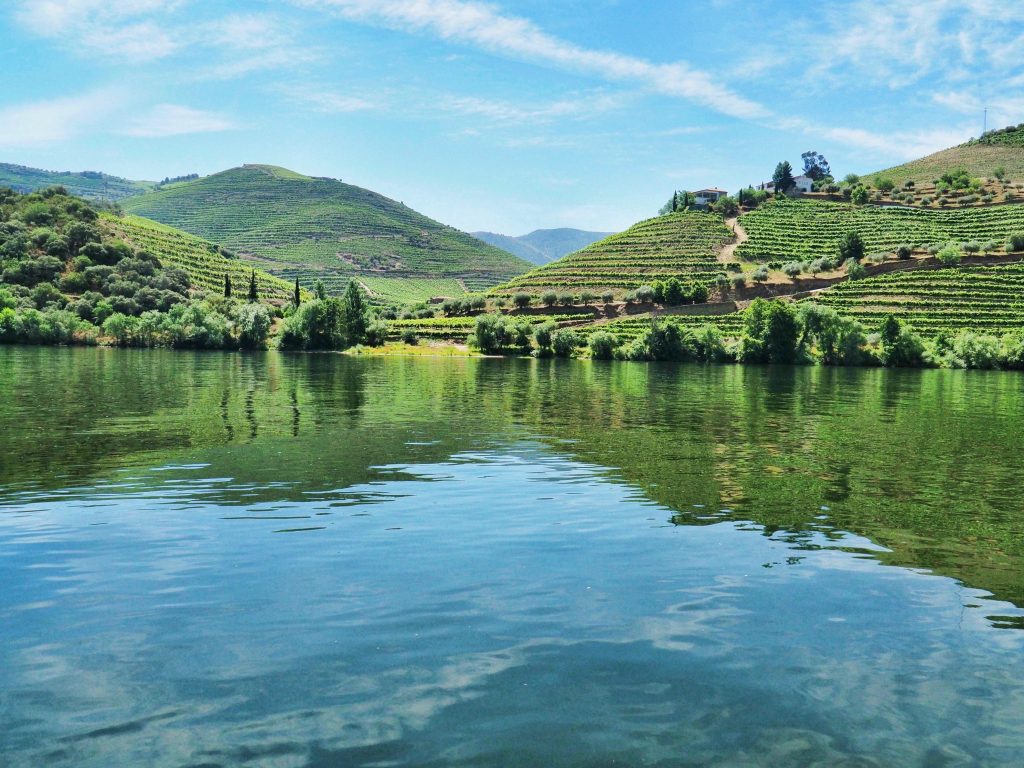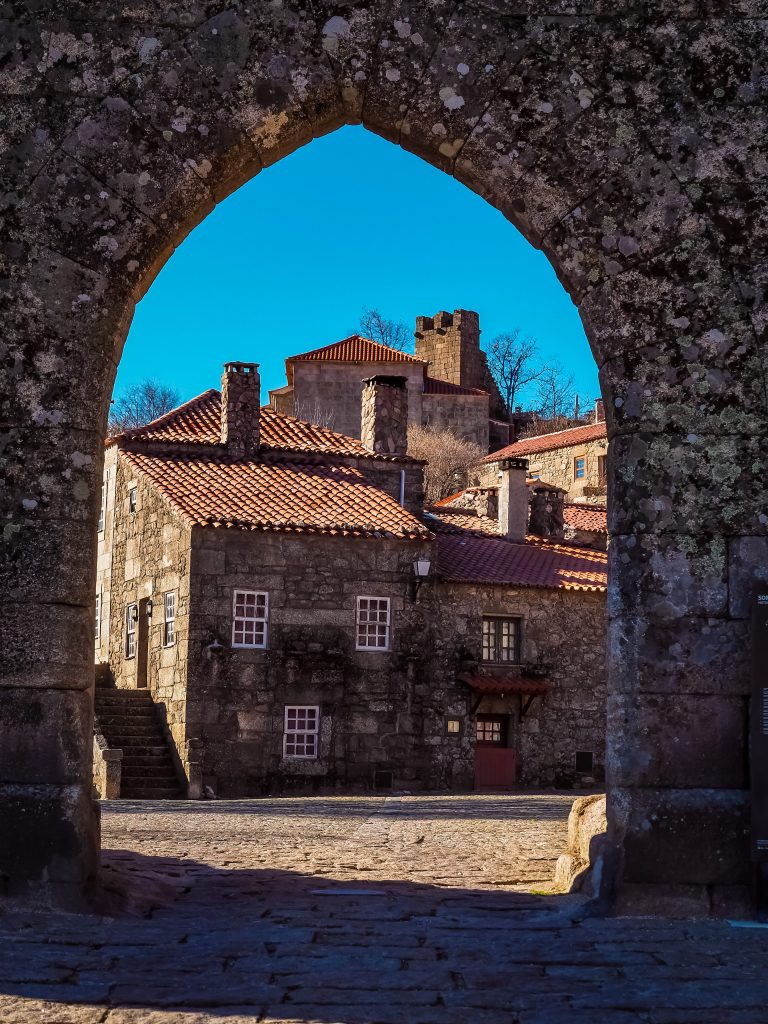
Portugal is a relatively small country with tons of culture. It is no surprise that some of us choose cars as our transportation when traveling the country. However, it is no easy task and should be carefully considered beforehand.
Each country has its own set of laws and you will not want to transgress those! Besides giving you practical advice on driving safely in Portugal, read on to find tips on how to avoid being fined.

14 Best Tips for Driving Safely in Portugal
The minimum age to drive is 18 and the minimum age to rent a car is usually 23. If you are younger, avoid driving in Portugal.
The Right Side of the Road

If you are used to driving on the left side of the road, as happens in the UK, Ireland, Malta and Cyprus, South Africa, India, Japan, Australia, and New Zealand, the first aspect to have in mind is that in Portugal you need to drive on the right!
There are a few of tricks you can use to avoid getting confused about which side to be on when driving in Portugal:
- Do not be in a hurry, take time to study your surroundings;
- Pay attention to what other people are doing;
- Notice the road signs to see which way they are facing;
- Beware of road markings as those help you know which lane to be on;
- Remember the passenger is always closest to the ditch.
You should always overtake on the left. Also, on highways (or motorways) note that the middle lane is for overtaking only, do not keep there indefinitely after overtaking, even if others do!
Roads

Driving on the older roads in Portugal is challenging. If you are not confident driving in narrow roads and hairpin bends, choose highways (or motorways). Consider that you will pay to take those and that you will be losing amazing views and small villages as you do so but it will save you a lot of hassle!
Another aspect to have in mind is that slip roads can be shorter than you are used to. Take precautions concerning that, such as slowing down before taking the slip road.
Do not cross unbroken or double white lines. This means that in case there is one of these (without an additional dotted white line on your side) you can’t turn left or overtake.
Tolls


There are two different types of systems of toll collection in Portugal.
The most common system is taking a ticket when entering a highway and paying the charge in a booth when exiting it.
However, there is also an exclusively electronic system (most common on the North of the country) in which you pay your toll charges afterward.
There are many ways of paying these and you should seek more information beforehand if you are intending on using highways, especially those with exclusively electronic systems. You may opt for automatic (EASYToll and Temporary Via Verde Device) or prepaid payment solutions (TollService and Toll Card).
Via Verde electronic devices will allow you to pay your toll charges through automatic debit. You may use it for all Portuguese highways. There are temporary Via Verde devices (‘Leve’), handy for tourists! Buy these in Via Verde stores or online. An important tip is to not use the Via Verde channel unless you have one of those devices.
The Portugal Tolls website is a handy tool with information on tolls, how to pay them, how to buy an automatic or prepaid payment solution, and even a toll calculator.
Speeding



If in your home country you are used to miles per hour, remember that in Portugal all numbers displayed correspond to kilometers per hour instead. Learn how to quickly convert kph to mph and get used to checking your car’s speedometer to make sure you are not speeding.
Beware of speed limits when driving in Portugal. Pay attention to road signs as you should always follow them. These are not there though and you need to remember a few numbers beforehand:
- 50 kph is the speed limit in towns and villages;
- 90 kph is the speed limit outside of towns and villages;
- 120 kph is the speed limit in most highways.
Avoid being fined. Speed cameras and undercover police cars controlling your speed are widespread. They will find you if they catch you speeding.
Traffic Lights


There are four different lights you will find when driving in Portugal: green, yellow, flashing yellow, and red.
You can go to green lights. You probably have priority over others but always be aware of other cars and pedestrians.
Yellow lights are for you to stop as long as you can do it safely. You will be fined if you drive through a yellow light when you could have stopped safely before it.
Flashing yellow lights mean you may go with care.
If in your home country you are used to turning right on red lights, this is not allowed in Portugal! If you are facing a red light, wait.
Traffic Circles

Traffic circles (or roundabouts) are everywhere in Portugal. In order to safely drive in Portugal, you will need to be comfortable with them!
The first aspect to have in mind is that those already in the circle have the right of way. Do not get in unless it is completely safe to do so.
Also, use your signals (or indicators) to share your intentions with other drivers. They may not do the same but this is one of those times you should not follow their example!
When leaving on the first exit, use the outside lane and your right signal.
If you are not leaving on the first exit, use the inner lane and your left signal when entering the traffic circle. Before exiting the traffic circle, use your right signal and check if there is anybody on your right before turning.
Road Signs

You need to know the Portuguese road signs before arriving! Even though there are some specific differences, take a look at this list by Auto Europe to get to know the more important ones.
As in many countries, when there is a Stop sign, you need to completely stop before proceeding, even if there is nobody obstructing your way.
It is hard to see most road signs when driving in Portugal at night unless you use full beam headlights (which you should not use if there is a car anywhere less than 100 meters in front of you or in a town or village). Slow down when driving in Portugal at night to make up for that fact.
Special Situations

Challenging weather conditions require special measures. If it is rainy or foggy, turn on your headlights. Also, pay attention to slippery roads with black ice or when it rains after a long dry season.
Do not leave kids or pets unattended inside a car.
Let emergency vehicles through, even if the traffic lights are red for them. Traffic accidents often happen in those situations and letting them through will avoid them.
Pedestrians

Pedestrian crossings (or crosswalks) are usually well signalized. There are either zebra crossings on the floor or traffic light controlled ones. Either way, passengers should always be let through if in a pedestrian crossing, unless the traffic lights are red to them.
However, pedestrians often cross the road of their crossings. Even if it is illegal, beware and take precautions, slowing down in towns and villages. Also, notice that is it legal for them to cross the road after a junction even if in the absence of a pedestrians crossing.
Parking

Parking in Portugal is not always easy, especially in cities.
If there is a yellow line on the outer margin of the road, it means you can’t park there. Choose to park in what you know is a proper parking space to avoid any troubles! You may end up paying a fine or having your vehicle towed away.
Always park facing the direction of traffic.
Safety

Know that, even though Portugal is in general known for being a safe country, car theft does occur. Two of the situations in which you need to be most aware are when you stop on traffic lights and when you have car troubles.
A few considerations to have in mind while driving in Portugal:
- Lock your doors when inside a car, especially when driving in cities;
- Do not pull for anyone except police officers;
- If possible and in general, do not accept the help of anyone except police officers or motorway assistants if having car troubles.
Precautions against theft while parking are in order. Thieves may take any opportunity to steal your belongings or even vehicle. Some tips:
- If someone self-appointed, points an available space out for you and helps you park, consider giving them a tip to avoid repercussions. If you are not willing to do so, avoid these ‘helpers’ completely;
- Make sure to lock all doors and windows when parked;
- Do not leave personal items (including documents) or bags in plain sight inside the vehicle.
- Move them to the trunk of your vehicle before you arrive at your destination and avoid potential threats knowing those are secured there.
Cars

Most cars in Portugal are manual transmission cars. If you are not used to driving one of those, you will probably need to pay for an upgrade to rent an automatic car. If you are on a strict budget, consider getting familiar and comfortable with a manual shift in advance.
If you are from North America, you will notice a difference when it comes to car sizes! Even though compact SUV is more common nowadays, these are usually considerably smaller cars than you are probably used to.
Even though there are exceptions, in most cases, you will need to fill your vehicle’s tank yourself. In Portuguese, Petrol is “gasolina” and diesel is “gasóleo”.
Car Troubles

If you get involved in a traffic accident, leave your vehicle where it is and call the national emergency phone number 112.
A couple of essential notions for when you have car troubles are:
- Always wear the high-visibility reflective jacket (bright fluorescent vest) you find in every car;
- Always place the safety triangle outside your car, on the road, so that it is visible from a minimum distance of 30 meters.
These are rules that everyone should follow and not complying with them is illegal.
Police Officers

Unlike in other countries around the world, do not be afraid of asking police officers for help. They are there to help you.
Police officers will also find you if they need to! Remember that you are traveling and what you least need is to break the law in a foreign country.
Some rules to comply:
- Make sure to have your passport, driver’s license and rental contract (if driving a rented car) at all times;
- Do not drink and drive. With a legal drinking limit of 0.5 grams per liter, it is better to avoid drinking alcoholic beverages at all if you know you are going to be driving afterward. Choose to take a taxi or an Uber if you drink alcoholic beverages;
- Texting or talking on the mobile phone is illegal. Opt for using your car’s Bluetooth system or a hands-free kit;
- Wear the mandatory seatbelts;
- Dropping litter from the car is not only unacceptable but also illegal;
- When traveling with kids, note that children under 12 years old and under 135 cm tall (4 foot 5 inches) are required to travel with the appropriate restraint system in the rear seat with the seatbelts fastened. Pets will also require extra measures;
- Also, we know you are on vacations but do not drive barefoot or wearing flip flops!
You need to be careful in order to avoid trouble driving in Portugal. However, it is certainly not more than you would in any other country.
Get to know the rules and do not be in a hurry is our best advice.
If you need help planning your self-drive trip to Portugal, let me know, please.




